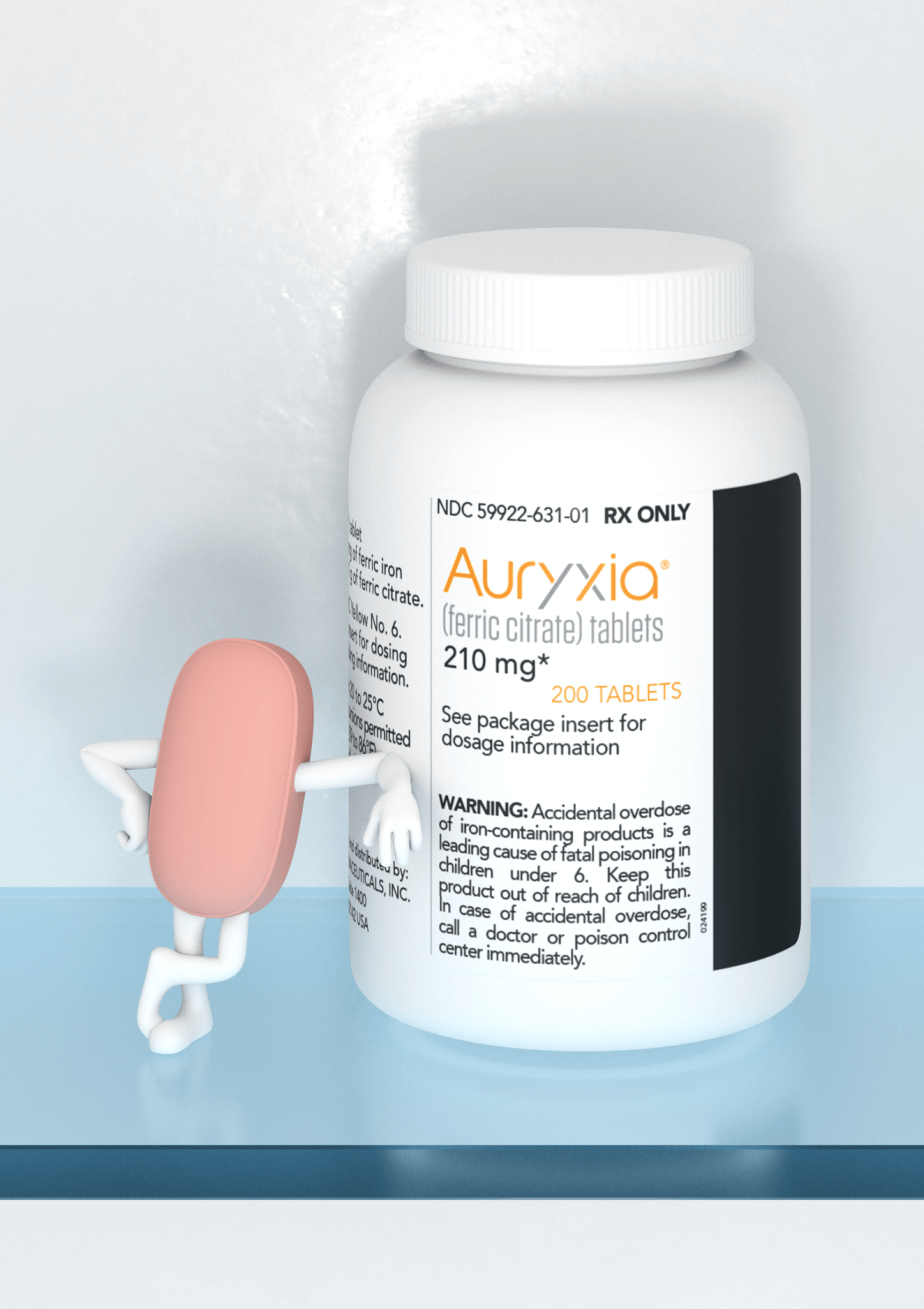CONTRAINDICATION
AURYXIA® (ferric citrate) is contraindicated in patients with iron overload syndromes, e.g., hemochromatosis
WARNINGS AND PRECAUTIONS
- Iron Overload: Increases in serum ferritin and transferrin saturation (TSAT) were observed in clinical trials with AURYXIA in patients with chronic kidney disease (CKD) on dialysis treated for hyperphosphatemia, which may lead to excessive elevations in iron stores. Assess iron parameters prior to initiating AURYXIA and monitor while on therapy. Patients receiving concomitant intravenous (IV) iron may require a reduction in dose or discontinuation of IV iron therapy
- Risk of Overdosage in Children Due to Accidental Ingestion: Accidental ingestion and resulting overdose of iron-containing products is a leading cause of fatal poisoning in children under 6 years of age. Advise patients of the risks to children and to keep AURYXIA out of the reach of children
ADVERSE REACTIONS
The most common adverse reactions reported with AURYXIA in clinical trials were:
- Iron Deficiency Anemia in CKD Not on Dialysis: Discolored feces (22%), diarrhea (21%), constipation (18%), nausea (10%), abdominal pain (5%) and hyperkalemia (5%)
SPECIFIC POPULATIONS
- Pregnancy and Lactation: There are no available data on AURYXIA use in pregnant women to inform a drug-associated risk of major birth defects and miscarriage. However, an overdose of iron in pregnant women may carry a risk for spontaneous abortion, gestational diabetes and fetal malformation. Data from rat studies have shown the transfer of iron into milk, hence, there is a possibility of infant exposure when AURYXIA is administered to a nursing woman
INDICATION
AURYXIA® (ferric citrate) is indicated for:
- The treatment of iron deficiency anemia in adult patients with chronic kidney disease not on dialysis
To report suspected adverse reactions, contact Akebia Therapeutics, Inc. at 1-844-445-3799
Please see full Prescribing Information
REFERENCES
- AURYXIA® [Package Insert]. Cambridge, MA: Akebia Therapeutics, Inc.
- Fishbane S, Block Ga, Loram L, et al. Effects of ferric citrate in patients with nondialysis-dependent CKD and iron deficiency anemia. J Am Soc Nephrol. 2017;28(6):1851-1858.
- Data on File 16, Akebia Therapeutics, Inc.
- Data on File 14, Akebia Therapeutics, Inc.

